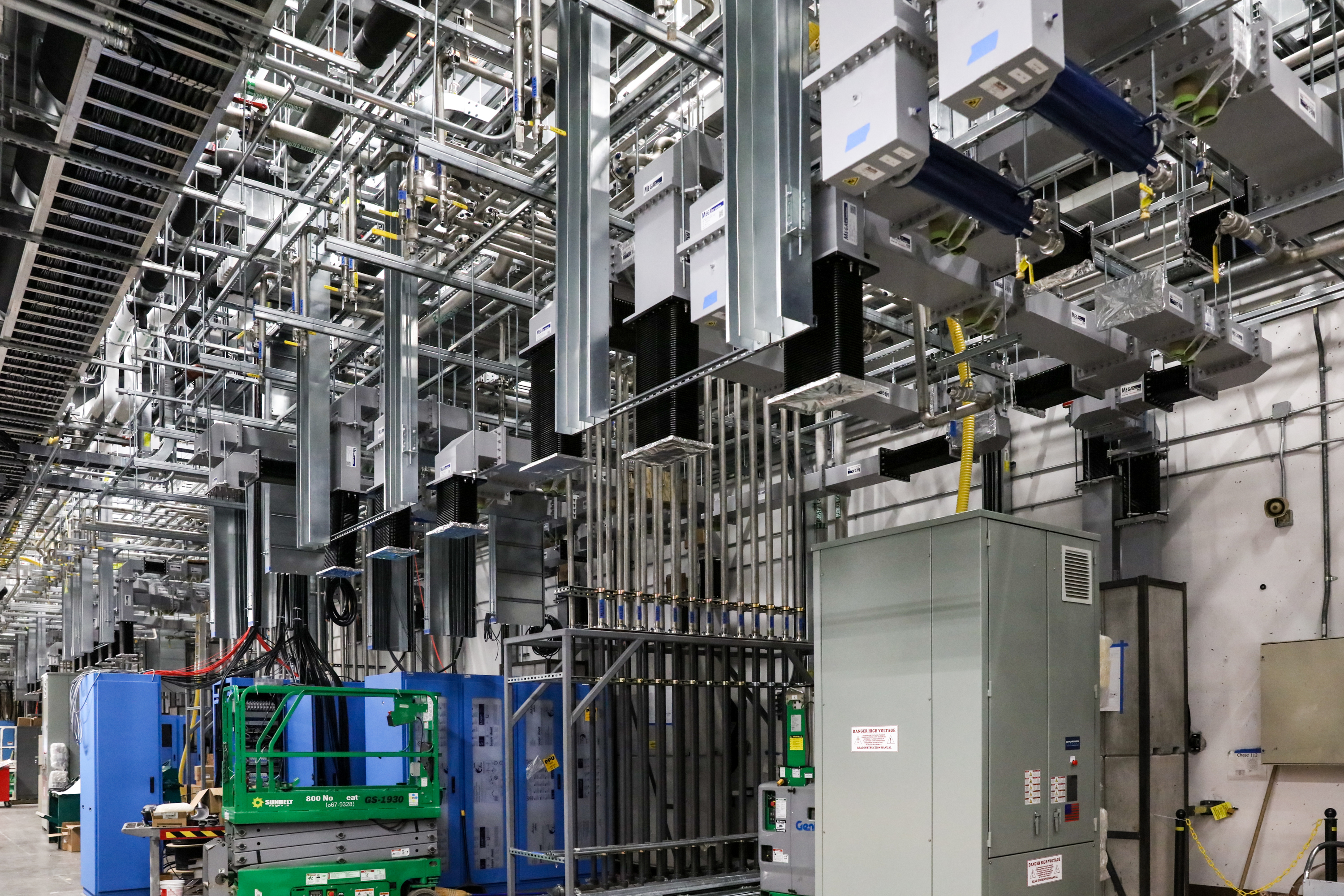Superconducting Linac Upgrades
The Basics
The 355-yard-long linear accelerator, or linac, at the Spallation Neutron Source (SNS) accelerates hydrogen ions to around 90 percent of the speed of light. The linac consists of copper cavities and superconducting niobium cavities (metallic chambers that can contain electromagnetic fields) inside 23 complex, supercooled structures, called cryomodules, that accelerate the ion beam. The linac also includes numerous magnets that focus and steer the beam.
The first one-third of the linac operates at room temperature, while the remainder uses 81 superconducting cavities cooled with liquid helium to just two degrees above absolute zero.
PPU Upgrades
PPU added seven more cryomodules, containing a total of 28 additional superconducting cavities, which are based on the original high-beta cryomodule design with only minor modifications to facilitate manufacturing. The new cryomodules take advantage of improvements to their supporting Radio-Frequency Systems to provide increased maximum output power.
The cavities were installed inside liquid helium vessels, which are fabricated from titanium. New, more robust power couplers feature a thicker inner conductor wall to improve heat conduction.
Seven additional cryomodules similar to this unit were installed in an existing space left open during the original SNS construction.
The klystron gallery was outfitted with new electronics to support the 28 new klystrons.



